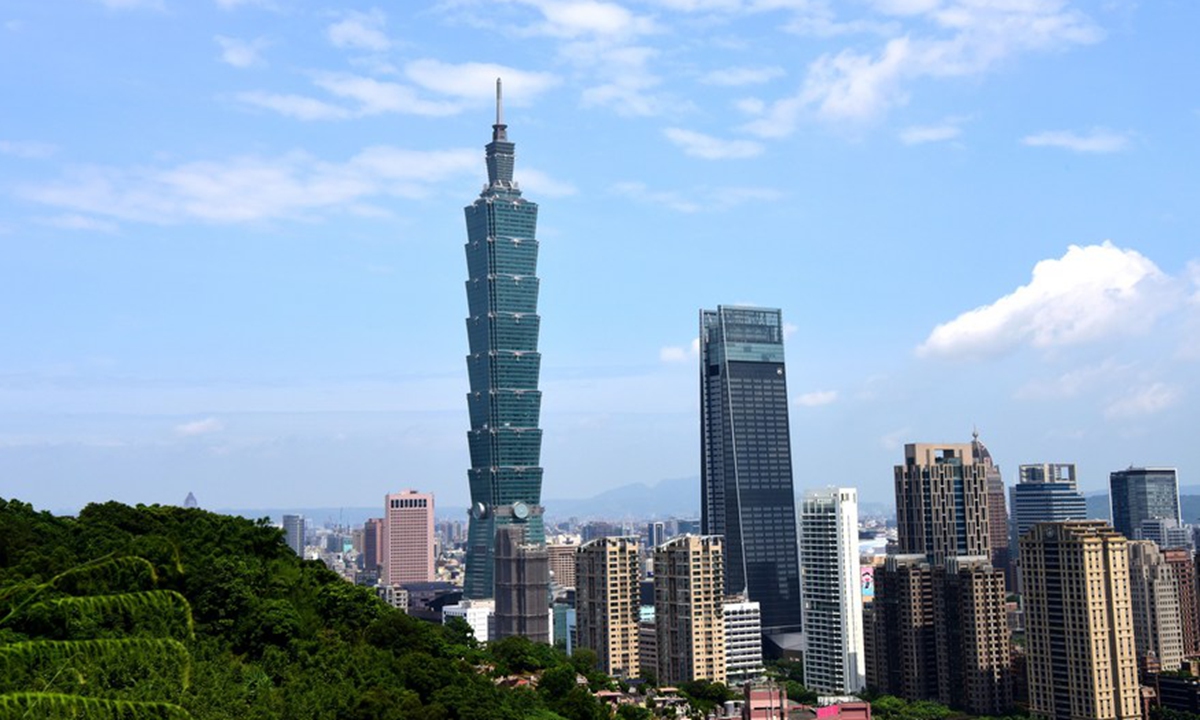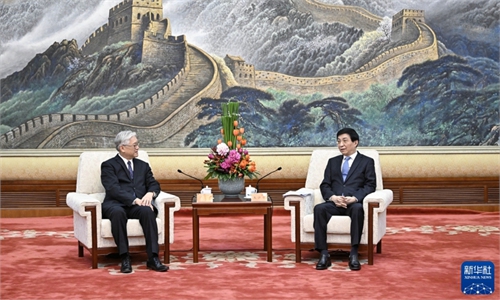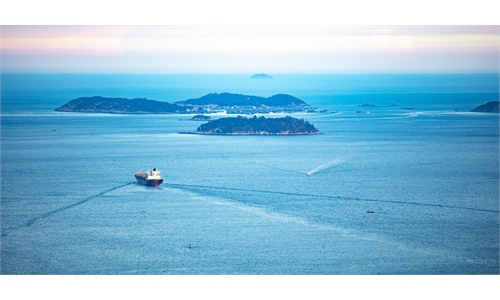
Photo taken on July 21, 2019 from Xiangshan Mountain shows the Taipei 101 skyscraper in Taipei, southeast China's Taiwan. Photo: Xinhua
China's Taiwan island saw its exports contract for the fifth straight month in January as consumers in major markets from the Chinese mainland to the US and the EU posted reduced demand and key industries sought to move out of the region amid political pressure from the US.
In January, the region's exports totaled $31.5 billion, down 21.2 percent year-on-year, according to data released by finance authorities of the Taiwan island on Tuesday.
Specifically, exports of electronic parts fell 20.1 percent year-on-year in January, marking the biggest decline in 11 years, while exports of integrated circuits decreased 18.3 percent, the most in 14 years.
The island's imports also shrank sharply in January, leaving a trade surplus of $2.3 billion, the lowest level in three years.
The sluggish exports weighed down the regional manufacturing sector. The purchasing managers' index (PMI) for Taiwan's manufacturing sector fell 3.3 points to 40.4 in January, logging a seventh straight month of contraction. A reading above 50 indicates expansion in manufacturing activity, while a reading below that level shows contraction.
Exports have historically been a major pillar for the island's economy, accounting for more than 60 percent of the region's total GDP. In 2021, when Taiwan island's exports recorded a growth rate of 29.3 percent, with 43.9 percent of the exports going to the Chinese mainland, the island's economy grew by 6.53 percent. In 2022, with its exports to the mainland declining 1.6 percent, the island's exports climbed merely 7.4 percent, leading to an economic growth of 2.43 percent during the year.
Therefore, the poor export performance recorded by the island at the beginning of this year has led a number of local research institutes to forecast the region's 2023 growth rate to dip below three percent.
Since a large part of the island's trade surplus with the Chinese mainland and the US comes from semiconductors, observers generally believe that due to the US crackdown on mainland companies in the semiconductor sector and the US demand of key technology industries from the Taiwan island to move and build factories in the US, the island's external trade could be undergoing significant structural changes.
Meanwhile, the Biden administration has continued to call for advanced technological manufacturing to shift back to the US, particularly when it comes to the semiconductor industry.
Taiwan Semiconductor Manufacturing Co (TSMC), the world's largest contract chipmaker, is constructing a $12 billion plant in the US state of Arizona. TSMC also said in December 2022 that it would more than triple its planned investment at its new Arizona plant to $40 billion, making it among the largest foreign investments in US history.
Global Times



